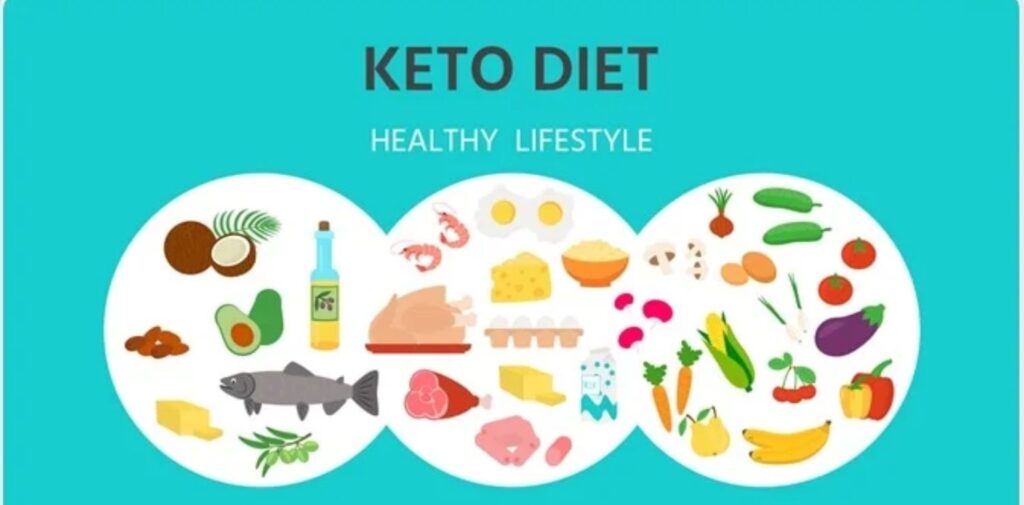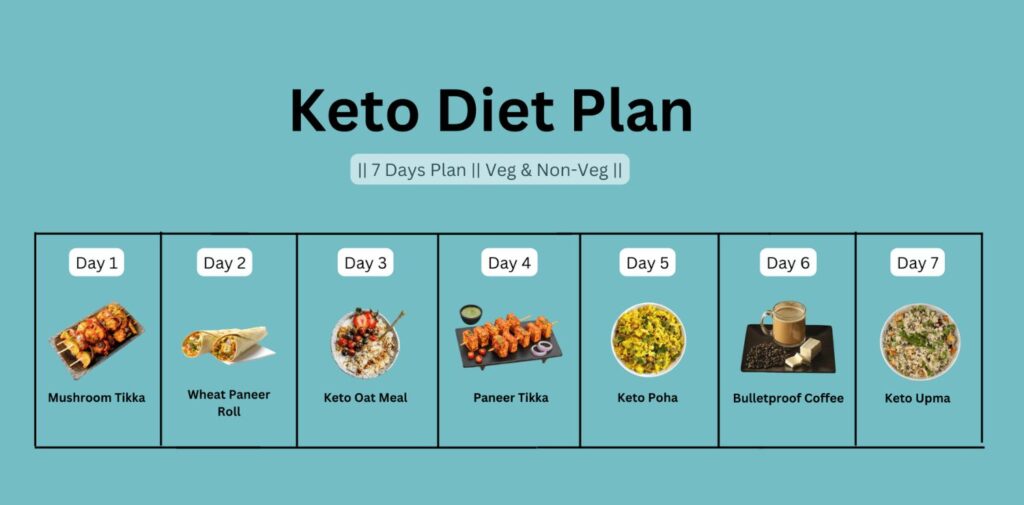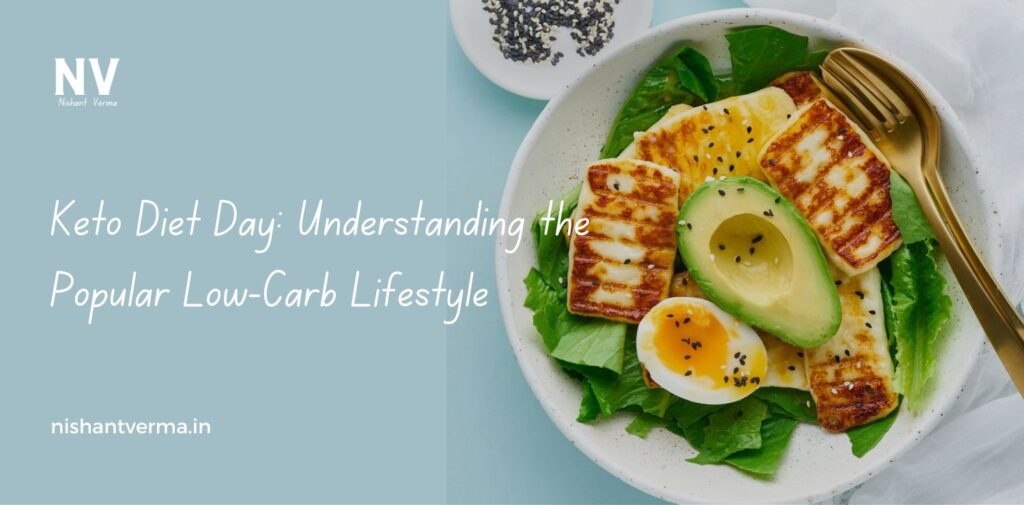In recent years, the Keto diet has gained a lot of attention as one of the most popular and effective ways to lose weight and maintain a healthy lifestyle. Keto Diet Day, celebrated on January 5th, is a day to recognize and learn more about the ketogenic diet, its benefits, and how it has become a significant trend in many countries, including India. The diet is focused on a high-fat, moderate-protein, and low-carbohydrate eating pattern that helps the body enter a state of ketosis, where it burns fat for energy instead of carbohydrates. But how does it work? And why is it so popular, especially in India?
In this article, we will explore the basics of the diet, its benefits, and the way it has gained popularity in India. We will also discuss how the Keto diet day can be incorporated into the Indian way of eating, using local foods, and the potential challenges that come with it.
What is the Keto Diet?
The Keto diet is a high-fat, low-carbohydrate diet designed to help the body burn fat for fuel. When you drastically reduce your intake of carbs, your body enters a metabolic state called ketosis. In this state, your liver starts breaking down fats into molecules called ketones, which are then used as energy instead of glucose (from carbohydrates).
Typically, a standard Keto diet consists of:
- 70-75% fats (healthy fats like avocado, nuts, seeds, and oils)
- 20-25% proteins (such as meat, fish, eggs, and dairy)
- 5-10% carbohydrates (mainly from vegetables, fruits, and low-carb foods)
This macronutrient ratio forces your body to shift its primary source of energy from glucose (which comes from carbohydrates) to fat. As a result, you burn fat more effectively, leading to weight loss and other health benefits.

Why is the Keto Diet Popular in India?
The Keto diet has gained significant popularity in India due to several factors, such as:
- Effective Weight Loss: The Keto diet has been widely recognized for its ability to help people lose weight quickly. Many people in India, especially in urban areas, struggle with weight management, and it provides a practical solution to shed those extra kilos.
- Improved Energy and Mental Clarity: Apart from weight loss, many people who follow the diet report improved energy levels, better focus, and mental clarity. This is because ketones are an efficient source of energy for the brain, unlike glucose, which can cause energy crashes.
- Managing Health Conditions: The diet is often used for managing health conditions like Type 2 diabetes, epilepsy, and high cholesterol levels. In India, where the rates of diabetes and obesity are on the rise, the diet has become a popular tool for managing these chronic conditions.
- Low-Carb Options in Indian Cuisine: Indian cuisine, known for its rich spices and diverse flavors, offers several low-carb options that can be incorporated into the Keto diet. This has made it easier for people in India to follow the diet while still enjoying their favorite foods.
How to Follow the Keto Diet in India?
The challenge of following the Keto diet in India lies in balancing traditional food habits with the low-carb principles of Keto. However, Indian cuisine offers a variety of foods that are naturally low in carbohydrates and can be easily adapted to a Keto lifestyle. Here are some popular Indian foods that fit well into the diet:
Vegetables
India offers a wide variety of low-carb vegetables that can be consumed on a diet. Some great options include:
- Spinach
- Cauliflower
- Cabbage
- Brussels sprouts
- Okra (ladyfinger)
- Eggplant (baingan)
These vegetables can be used in various dishes like sabzis, curries, and even stir-fries. Indian dishes like palak paneer (spinach with cottage cheese) and gobi masala (cauliflower curry) are perfect for a Keto meal.
Nuts and Seeds
Nuts and seeds are rich in healthy fats and proteins, making them an essential part of the Keto diet. Some great options include:
- Almonds
- Walnuts
- Chia seeds
- Flaxseeds
These can be eaten as snacks, added to smoothies, or used in baking Keto-friendly desserts.
Dairy Products
Dairy is an important source of fats and proteins on the Keto diet. Full-fat dairy products like:
- Paneer
- Cheese
- Greek yogurt
- Ghee (clarified butter)
These are commonly used in Indian cooking and are ideal for Keto meals. Ghee, in particular, is considered a healthy fat and is a staple in Indian households.
Meat and Fish
For non-vegetarians, the Keto diet can include various types of meat and fish. Some good choices include:
- Chicken
- Mutton
- Fish (like salmon and mackerel)
- Eggs
These can be used in curries, grilled dishes, and even Keto-friendly biryanis.
Low-Carb Flour Alternatives
Traditional Indian foods like roti and paratha are high in carbs, which can make it difficult to follow a Keto diet. However, there are several low-carb flour alternatives that can be used to make Keto-friendly versions of these foods:
- Almond flour
- Coconut flour
- Flaxseed meal
These flours can be used to make Keto parathas, Keto rotis, and other delicious bread alternatives.

Benefits of the Keto Diet
The Keto diet offers several benefits, some of which include:
- Weight Loss: The primary reason most people turn to the Keto diet is for weight loss. By significantly reducing carbohydrate intake and focusing on healthy fats, the body starts burning fat for energy. This leads to fat loss, especially from the belly and thighs, which are common trouble spots.
- Improved Heart Health: Keto may help improve heart health by lowering triglycerides and increasing levels of good cholesterol (HDL). Healthy fats, such as those from avocados, nuts, and olive oil, are an integral part of the diet, which can have a positive impact on heart health.
- Reduced Risk of Type 2 Diabetes: The diet can help in reducing insulin levels and improving insulin sensitivity. For individuals with Type 2 diabetes, this diet may help control blood sugar levels and manage the condition more effectively.
- Mental Clarity and Focus: Many people report improved mental clarity and focus when on the Keto diet. Since the brain uses ketones for energy, people often feel more alert and focused.
Challenges of the Keto Diet
While the diet offers many benefits, it also comes with its own set of challenges:
- Adherence: Maintaining a low-carb, high-fat diet can be difficult, especially in a carb-heavy culture like India, where rice, chapati, and potatoes are staples in daily meals.
- Initial Side Effects: When first starting the Keto diet, some people experience flu-like symptoms known as the “Keto flu.” These can include headaches, fatigue, and irritability.
- Long-Term Sustainability: Some individuals find it difficult to stick to the Keto diet for the long term, particularly during festivals or social events when traditional foods are abundant.

Conclusion
Keto Diet Day is an opportunity to reflect on the benefits and challenges of following a low-carb, high-fat lifestyle. In India, the Keto diet is becoming increasingly popular as people look for effective ways to manage their weight and health. With a variety of local, Keto-friendly foods available, it is possible to enjoy the benefits of the Keto diet while still appreciating the rich flavors of Indian cuisine. However, as with any diet, it is essential to consult a doctor or nutritionist before making significant changes to your eating habits. So, whether you’re considering starting the Keto diet or already following it, use Keto Diet Day as a chance to appreciate the health benefits it offers and to share knowledge about this exciting way of eating with others.




